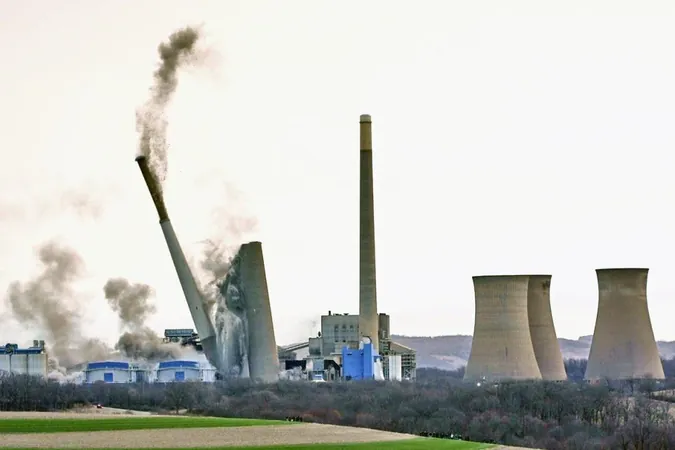
From Coal to AI: Pennsylvania's Groundbreaking Energy Transition
2025-04-06
Author: Chun
Introduction
In a striking shift from its coal-dominated past, a Pennsylvania town is set to become a cornerstone of the future energy landscape. The Homer City Generating Station, once the state's largest coal plant, was partially imploded last month to pave the way for an ambitious new development: a massive AI data center campus powered by natural gas from the nearby Marcellus shale basin.
Project Overview
This transformative project is quickly gaining attention as it may evolve into the largest gas-fired power plant in the United States, with the potential to generate an astonishing 4.5 gigawatts of power—enough to provide electricity to approximately 3 million average US households or nearly all of Manhattan. The project is described as 'one of the most ambitious initiatives to emerge amid a boom in power demand from data centers supporting artificial intelligence operations,' according to Bloomberg.
Campus Details
Covering over 3,200 acres, the new Homer City Energy Campus aims not only to boost local energy supply but also to support thousands of homes in the region. As noted by Homer City Redevelopment (HCR) and construction partner Kiewit Power Constructors Co., the development is specifically designed to cater to the burgeoning needs of high-performance computing and innovative technology companies shaping the future of America's digital landscape.
Closure of the Generating Station
The closure of the Homer City Generating Station in 2023—after 54 years of operation—resulted from a critical combination of rising coal prices and the increasing affordability of alternative power sources, as highlighted by The Wall Street Journal. This prompted a concerted effort to repurpose the site, which already boasted extensive infrastructure to support substantial power generation capabilities.
Investment and Infrastructure
Investment firm Knighthead Capital Management, which holds a majority stake in HCR, emphasizes the importance of the location’s existing infrastructure and its potential as a power-generating hub. Preparing the site and establishing the necessary infrastructure for the data centers will require an estimated investment of over $10 billion, with total costs for the data centers expected to reach billions more.
Demolition and Future Plans
The implosion on March 22 took down the cooling towers and three of the four stacks of the former generating station; the remaining stack is anticipated to be demolished shortly. Construction of the new gas-fired power plant could commence later this year, with officials projecting that they may begin generating power as early as late 2027.
Conclusion
As Pennsylvania embraces this significant transformation from coal to cutting-edge technology, it marks a pivotal moment in the state's energy history, aligning with nationwide trends toward greener, more sustainable energy solutions while catering to the insatiable demand for data and computing power. The future is bright for Pennsylvania, but only if it can successfully navigate the challenges ahead in this massive undertaking.




 Brasil (PT)
Brasil (PT)
 Canada (EN)
Canada (EN)
 Chile (ES)
Chile (ES)
 Česko (CS)
Česko (CS)
 대한민국 (KO)
대한민국 (KO)
 España (ES)
España (ES)
 France (FR)
France (FR)
 Hong Kong (EN)
Hong Kong (EN)
 Italia (IT)
Italia (IT)
 日本 (JA)
日本 (JA)
 Magyarország (HU)
Magyarország (HU)
 Norge (NO)
Norge (NO)
 Polska (PL)
Polska (PL)
 Schweiz (DE)
Schweiz (DE)
 Singapore (EN)
Singapore (EN)
 Sverige (SV)
Sverige (SV)
 Suomi (FI)
Suomi (FI)
 Türkiye (TR)
Türkiye (TR)
 الإمارات العربية المتحدة (AR)
الإمارات العربية المتحدة (AR)